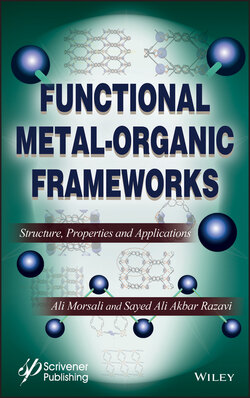Читать книгу Functional Metal-Organic Frameworks - Lida Hashemi, Ali Morsali - Страница 20
2.3 Function–Structure Properties
ОглавлениеThe majority of chemistry of an amine functionalized MOF is around their capability as guest-interactive sites in host-guest chemistry. Structural features of amine FMOFs depend on the amine type as primary, secondary or tertiary.
Primary amines (−NH2) mainly applied as guest interactive site in the side chain of MOFs in tethered form [21, 22]. Anyway, sometimes primary amines are able to coordinate to metal ions during self-assembly synthesis.
Secondary amines could be applied in both main chain and side chain (tethered form) of the MOFs. K. Mark Thomas and coworkers synthesized an amine FMOFs with secondary amine motifs (−NH−) in the main chain [51]. The freedom and rotation around C−N−C might give rise to flexibility of the MOF. Also, organic ligands based on secondary amines applied as V-shaped ligand for development of desired MOF [52]. In most of the time secondary amines in side chain applied for study about the Lewis basicity of the MOF for different applications [53–55].
Similar to secondary amines, tertiary amines could apply in side chain for study about the Lewis basicity of the MOF for different applications. Specific type of tritopic ligands based on tertiary ligands applied for construction of MOFs.
As we saw, amine function extensively applied with the aim of improvement in efficiency of MOFs in different type of applications. This attention is due to the fact that amine decorated MOFs benefits from several chemical features as well as easy synthesis method. Particularly, amine decorated MOFs show very good results in some application like carbon dioxide capture-release in post-combustion process. Also, they successfully applied for oil denitrogenation and detection of picric acid in aqueous solution. Though, amine decorated MOFs applied for energy and environmental purposes, but these achievements have to develop and tailor for real-life applications.
